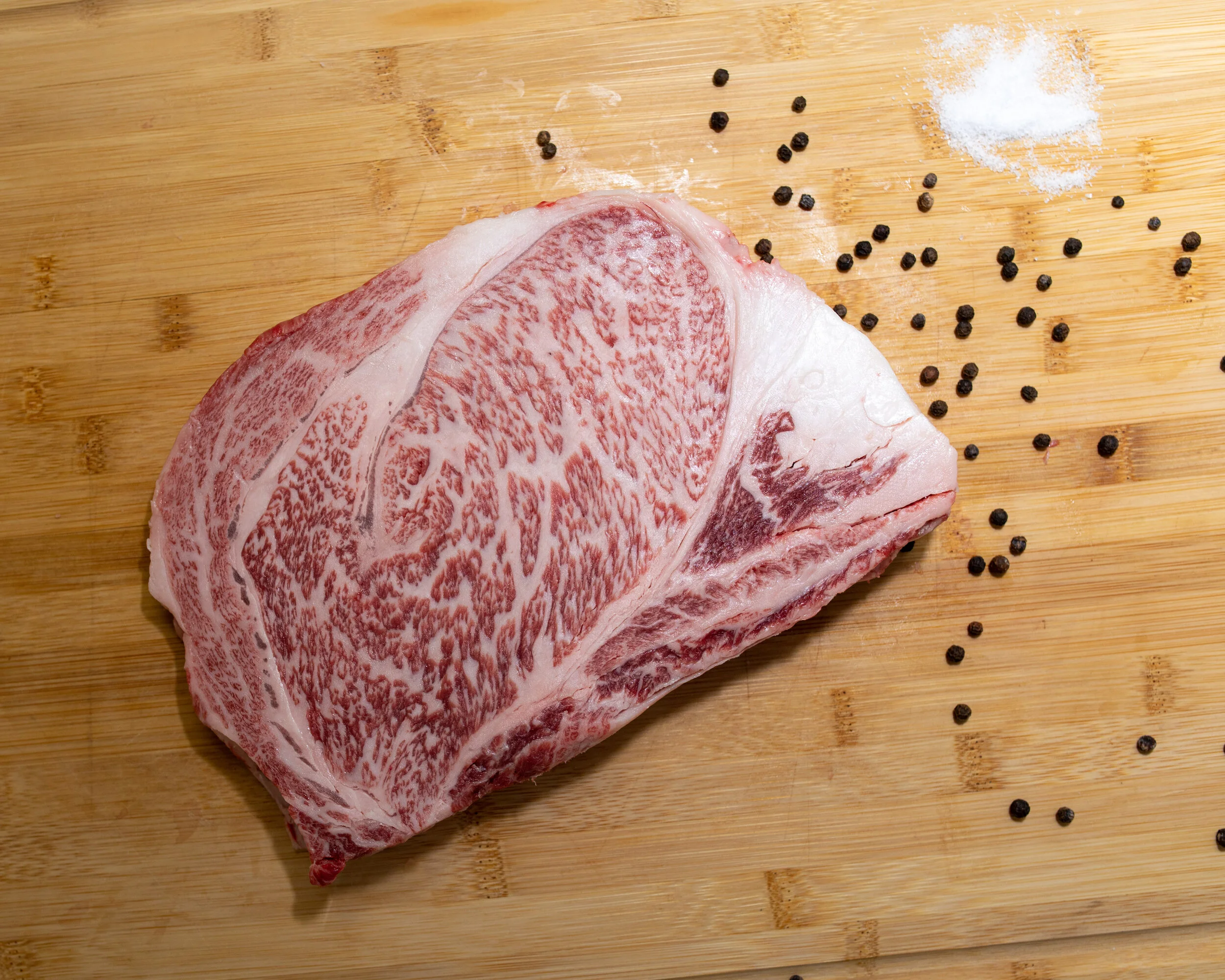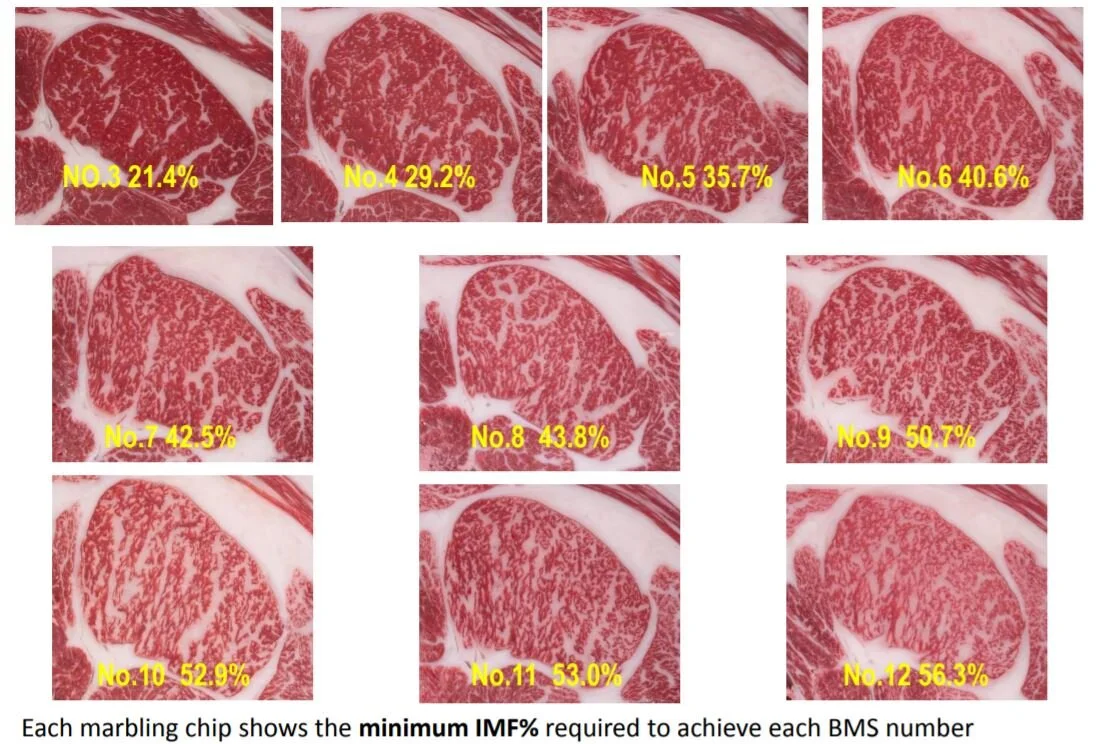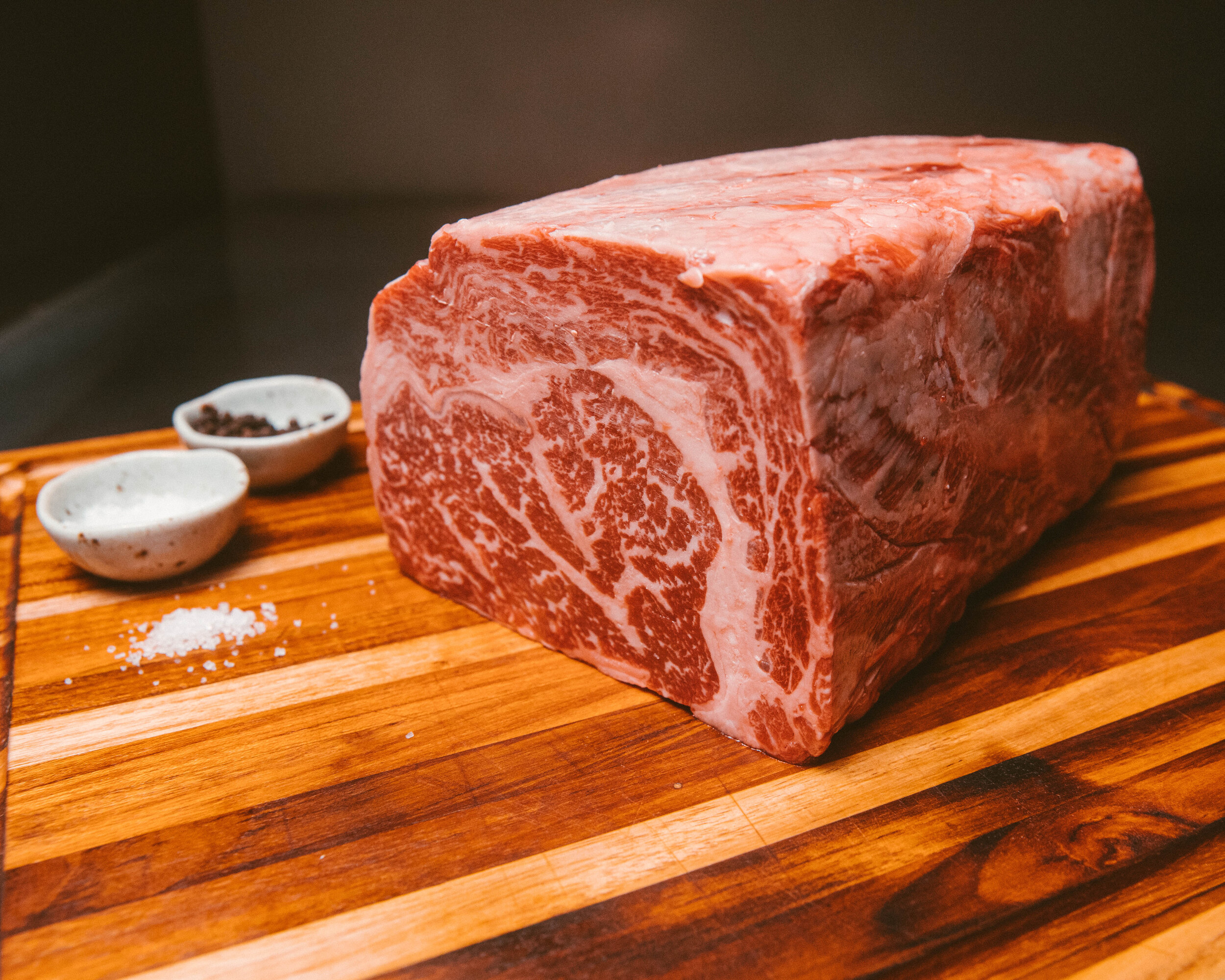What's the 411 on Wagyu!?
What’s the 411 on WAGYU?
You might have heard the words “Kobe Beef” and “Wagyu” tossed around casually to describe Japanese beef or Japanese “styled” beef. Confused yet? Don’t worry we are about to break this down that is as digestible as our delicious steaks.
First, let’s start with the word “Wagyu”. This is a literal Japanese word meaning “Japanese Cow” and specifically categorizes four breeds of Japanese cattle known as the Japanese Black, Brown, Polled and Shorthorn (Just like how USA is known for its Angus cattle). These four breeds are famed for their intramuscular fat, commonly referred to as marbling that gives the famous “buttery” characteristic. The most common type of Japanese Wagyu breed would be the Japanese Black.
Did you know? Wagyu is high in Omega-3, mono and saturated fat? It’s keto friendly!
In Japan, multiple prefectures have perfected the art of raising Wagyu cattle. Kobe, a city in Hyogo prefecture is one the most famous (and most expensive) producers of Wagyu and is a name people have come to know. Here at Ligma, we aim to carry multiple Wagyu brands from areas such as Miyazaki, Hokkaido, Kagoshima and more. We like to offer Wagyu from different regions as each might have slight differences in taste and texture.
Kobe beef is Wagyu but Wagyu is not Kobe Beef.
Secondly, A5 is Wagyu but not all Wagyu is A5. Think of USDA Prime, not all US meat is USDA Prime. There are levels to this. Still with us? Ok good. Before we talk about grading, lets talk about Australian Wagyu.
As noted above, Wagyu denotes four specific Japanese breeds. As history would have it, there was a period in time (if you want a history lesson, you can google this yourself) pure bred Wagyu cattle made its way to farms in Australia and America. These cattle were then cross bred using pure Wagyu genetics to produce Wagyu cattle that is distinct to its respective country. Cross bred cattle in Australia is a mix of Wagyu and either Angus or Holstein cattle. While in America it is a mix of Wagyu and Angus.
It isn’t just the mix of cattle breeds that effects how the end product will turn out, it is also dependent on the environment and processes used to raise the cattle that affect the overall outcome. Different standards will yield different results.
Here at Ligma, we currently offer Wagyu from Japan and Australia. Both are graded using similar yet different criteria. Click below to learn how each country grades the quality of their Wagyu.

JAPAN 
Wagyu beef is known for its exceptional amount of intramuscular fat, or marbling, which produces a unique taste and tenderness profile. This is one reason it is often sourced by high-end chefs and fine-dining establishments who are willing to pay more for its quality attributes.
In order to remain consistent, a meat quality grade standard is used to identify beef that fits Wagyu criteria. The JMGA (Japanese Meat Grading Association) Beef Carcass Grading Standard was developed in 2008 to grade carcasses with this increased marbling. It used a BMS (Beef Marble Score) grade range of 3-12. To meet the minimum BMS of 3, a carcass requires a minimum IMF (Intramuscular Fat) percentage of 21.
There are three yield grades (A, B and C) based upon yield percentages determined by estimated cutability percentage obtained at the sixth and seventh rib section, along with fine quality grades:
-
1-Poor
-
2-Below Average
-
3-Average (BMS 3-4)
-
4-Good (BMS 5-6)
-
5-Excellent (BMS 8-12)


AUSTRALIA


Australia is one of the biggest producers of Wagyu beef in the world and uses its own grading scale, the AUS-MEAT marbling system. It is very similar to its Japanese counterpart with the exception that the maximum score given is 9, anything above this will be considered 9+. You will also notice that the AUS-MEAT grading system does not utilize the Yield Scoring method.
Secondly, Australia does not implement a quality score like Japan’s A# system, they instead employ a data driven approach known as BREEDPLAN.
BREEDPLAN is a proven genetic evaluation system that uses pedigree, performance data and genomic information to determine a range of valuable Wagyu genetic breeding and production traits. and fully supported by the Australian Wagyu Association Board for the largest genetic evaluation of Japanese Black and Red Wagyu cattle that is publicly available worldwide.
The highest grade available for Australian Wagyu:
-
9+ (Extraordinary amounts of marbling; A5 contains a score between 8-12)
We offer Australian Wagyu ranging from BMS 4 - 9. For those who may not be used to the high marbling content and richness found in higher scores, we recommend to start with a smaller fat % or marble score.


TL;DR
In case you were feeling lazy and just wanted to know what is the difference between all them Wagyus, we have created this graphic below to illustrate marble scores and where each country and grade ranks up. Enjoy!
BMS = Beef Marbling Score

Key notes:
-
Marble score is from 1-12. 1 being no marbling to 12 being the most.
-
Australian Wagyu Marbling score tops out at 9, anything above this will be labeled as MS9+
-
USDA Prime is rated between a marble score of 4 & 5.
-
Higher the marbling, higher the richness in taste. That “buttery” feel. (This is not for everyone, if you yearn for a beefier bite, lower the score!)
-
Ligma’s A5 will be at a BMS of 10-12, also known as A5+.

